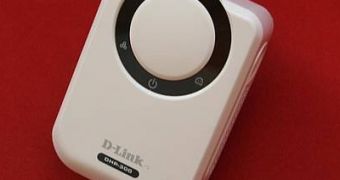Why run all sorts of cables all around your house when you can recycle one of the oldest wiring systems in the human history? More and more companies are focusing on re-using the old powerlines that are a mandatory presence inside each individual's house. D-Link's DHP-300 unit is one of the latest devices of its kind on the market.
The DHP-300 is a simple, yet efficient device. I was struck by its resemblance with one of those devices you plug into the wall socket to keep the air fresh in the room. Perfectly ivory-white, the appliance plugs into a regular wall socket, while the other end gets connected to a RJ-45 network interface card via a regular CAT5E cable. Of course, in order to prove itself useful, the device needs at least another one of its kind plugged elsewhere into the house. What would be the point of being connected to a... dead end, anyway?
The device does not need any hardware configuration, tweaking or tuning. That's why it totally lacks built-in buttons or switches. However, its front panel is rigged with three status LEDs: one for power, one for network cable connectivity, while the third reports whether it has found similar devices on the same power circuit.
The DHP-300 ready for use out-of-the-box, as there is not really much to configure. It does not have a DHCP server built in, which means that you will have to manually assign the Ips on the connected workstations. Another solution would be to have a router or server connected to another DHP-300 unit plugged into a wall socket to take care of the network's advanced settings.
Although the DHP-300 Ethernet Over Powerlines adapter comes with its own software, it is not required for basic operation. Instead, it is supposed to add some extra security to the network, since the powerlines are an open-network architecture. The software allows the user to set individual passwords for each unit, and, more than that, it also allows to create multiple networks on the same power circuit.

 14 DAY TRIAL //
14 DAY TRIAL //